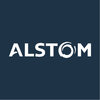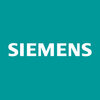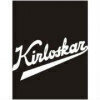Filter interviews by
KC Cottrell Structural Design Engineer Interview Questions, Process, and Tips
KC Cottrell Structural Design Engineer Interview Experiences
1 interview found
I applied via Naukri.com and was interviewed before Jul 2021. There were 2 interview rounds.

(5 Questions)
- Q1. Wind and seismic loads as per IS codes.
- Ans.
Wind and seismic loads are considered as per IS codes in structural design.
IS 875 (Part 3): Wind Loads
IS 1893 (Part 1): Seismic Loads
Wind loads are calculated based on the location and height of the building
Seismic loads are calculated based on the seismic zone and soil type of the location
The design should ensure that the structure can withstand the maximum wind and seismic loads as per the codes
- Q2. Application of loads in Staad model.
- Ans.
Loads are applied to the structure in Staad model to simulate real-life conditions.
Loads can be applied in different directions and magnitudes to different members and nodes.
Types of loads include dead load, live load, wind load, seismic load, etc.
Load combinations are used to consider multiple loads acting simultaneously.
Load cases are used to analyze the structure under different loading scenarios.
Examples of load ap...
- Q3. Plate Stress analysis using Roarks formula.
- Ans.
Roark's formula is used for plate stress analysis in structural design engineering.
Roark's formula is a mathematical equation used to calculate the stress and deflection of plates under various loads.
It takes into account the material properties, plate geometry, and boundary conditions.
Roark's formula is commonly used in the design of pressure vessels, aircraft structures, and other engineering applications.
Examples of...
- Q4. Manual Stiffeners design for plate work.
- Ans.
Manual stiffeners are designed to provide additional support to plate work.
Manual stiffeners are typically used in areas where the plate work is subjected to high stress or load.
The design of manual stiffeners involves determining the required thickness, length, and spacing of the stiffeners.
The spacing of the stiffeners is typically determined by the plate thickness and the applied load.
The thickness of the stiffeners...
- Q5. ESP FGD Bag filters working and functioning.
- Ans.
ESP FGD Bag filters are used to remove particulate matter and sulfur dioxide from flue gas.
ESP (Electrostatic Precipitator) removes particulate matter from flue gas using electrostatic forces.
FGD (Flue Gas Desulfurization) removes sulfur dioxide from flue gas using chemical reactions.
Bag filters are used to capture the particulate matter and sulfur dioxide that are not removed by ESP and FGD.
The captured particulate ma...
Interview Preparation Tips
Plate Stress analysis by using Roarks formula.
Staad & Structural design concepts.
Top trending discussions






Interview questions from similar companies

Senior Structural Engineer Interview Questions & Answers
Dar Al Riyadh Consultantsposted on 3 Sep 2024
(2 Questions)
- Q1. Types of Cement
- Ans.
Types of cement include Portland cement, rapid-hardening cement, and sulfate-resistant cement.
Portland cement is the most common type used in construction.
Rapid-hardening cement sets quickly and is often used in cold weather construction.
Sulfate-resistant cement is used in areas where soil or water has high sulfate content.
- Q2. Types of Foundation
- Ans.
Types of foundation include shallow, deep, and pile foundations.
Shallow foundations: spread footings, mat foundations
Deep foundations: pile foundations, drilled shafts
Pile foundations: driven piles, helical piles
KC Cottrell Interview FAQs
Tell us how to improve this page.
Interview Questions for Popular Designations
- Structural Engineer Interview Questions
- Civil Structural Engineer Interview Questions
- Senior Structural Engineer Interview Questions
- Junior Structural Engineer Interview Questions
- Senior Structural Design Engineer Interview Questions
- Civil Structural Designer Interview Questions
- Structural Steel Detailer Interview Questions
- Civil Structural Design Engineer Interview Questions
- Show more
People are getting interviews through
Interview Questions from Similar Companies
|
Manager
7
salaries
| ₹8 L/yr - ₹15.7 L/yr |
|
Engineer
7
salaries
| ₹4 L/yr - ₹5.8 L/yr |
|
Project Manager
6
salaries
| ₹13.4 L/yr - ₹16 L/yr |
|
Senior Manager
6
salaries
| ₹13.6 L/yr - ₹18 L/yr |
|
Deputy Manager
6
salaries
| ₹7.6 L/yr - ₹12 L/yr |

Thermax Limited

Alstom Transportation

BHEL

Siemens
Calculate your in-hand salary
- Home >
- Interviews >
- KC Cottrell Interview Questions >
- KC Cottrell Structural Design Engineer Interview Questions






